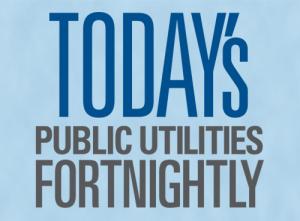Last week, we took note — with skepticism — of the increasing commentary claiming U.S. natural gas powerplants are a climate change problem that must be combatted.
Then, our analysis. Gas plants dramatically reduced carbon dioxide emissions and the grid’s carbon intensity by substituting for coal and enabling renewables. The gas plants did all this while remaining a very small slice of global emissions.
Yet it is sometimes said the growth in gas must now be halted and ultimately reversed. The rationale is that this is necessary to accelerate renewables growth towards taking over all electric generation.
Somehow they’ll be very many more wind turbines and very many more solar panels installed if gas is prevented? It's an important question. Because there is a long road ahead before renewables get anywhere close to taking over all electric generation.
Wind turbines, even after a surge in wind farm development, are just 6.5 percent of U.S. electric generation (over the twelve months through March 2019). Solar panels, even after a surge in solar, are just 2.3 percent of U.S. generation. And yes, this does include utility-scale, rooftop and other small-scale solar.

Together, that’s 8.8 percent. That’s less than one in eleven kilowatt-hours. It’s going to take a gargantuan effort to drive wind and solar to the very high percentages in the plans of some political leaders.
What will it take to increase wind generation, say, five-fold? Five times as many wind farms and a massive expansion of the transmission system to move the power to population centers. Five-fold would bring wind to 32.5 percent of U.S. generation, nearly one-third. Can we do that? Will it be significantly easier if gas growth is arrested?
What will it take to increase solar generation, say, ten-fold? Ten times as many solar farms, community gardens and rooftops. Ten-fold would bring solar to 23 percent of U.S. generation, nearly one-quarter. Can we do that? Will it be significantly easier if gas growth is arrested?
The easy answer is that as the gas option is erased, electric prices will rise making wind and solar more competitive. And secondarily, utilities wouldn’t have any alternatives to wind and solar to keep the lights on, with nuclear, hydro, coal and gas additions effectively banned.
So, amid higher electric prices and in desperation to meet electric demand, the thinking is — apparently — an almost unimaginable boom in wind and solar development will be spurred. And that this can be pulled off with fewer gas plants to provide grid flexibility when the wind doesn’t blow or the sun shines. Requiring I suppose a meteoric building spree in energy storage.
There may very well come a time when renewables and storage can really take off — like never before — without gas playing a significant role. But, in the 2020s?


